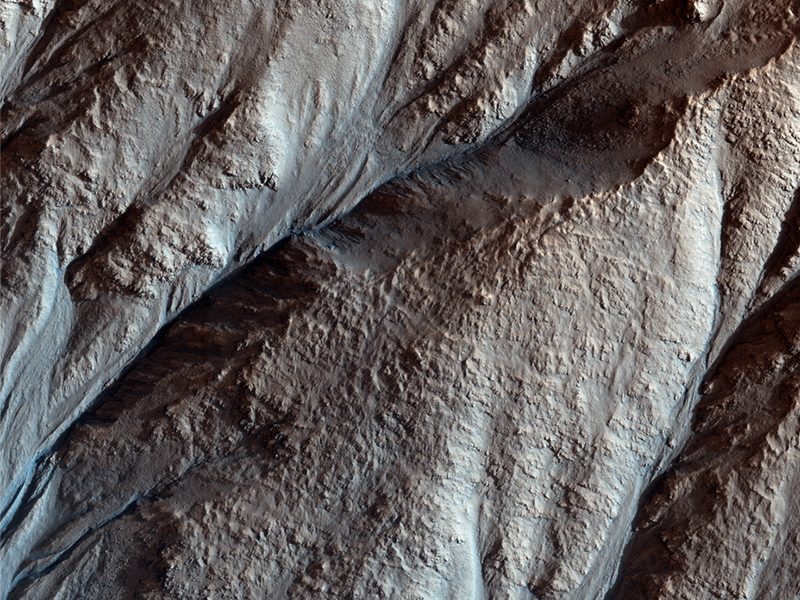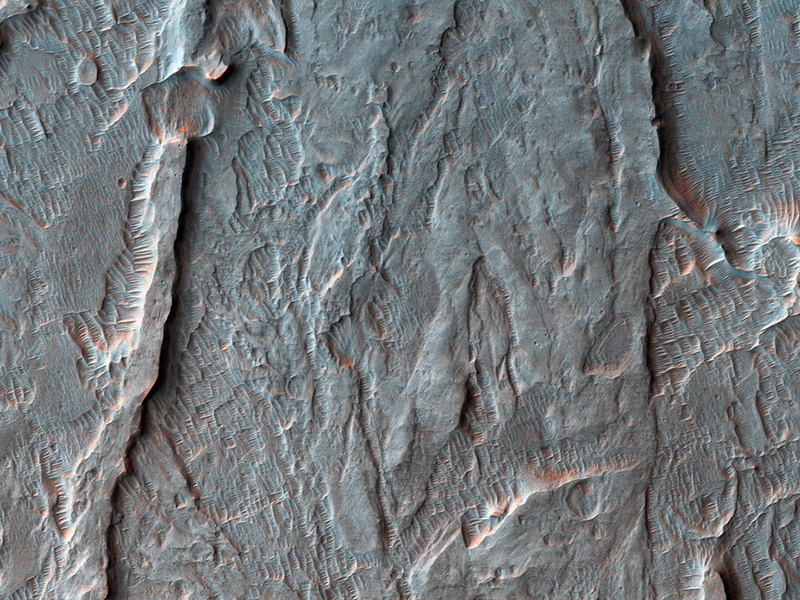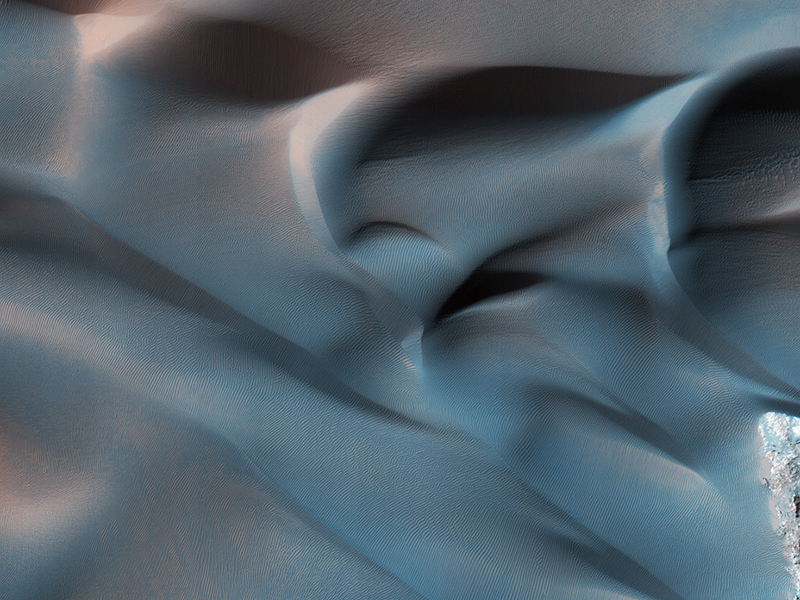Ginny Gulick wrote:Crater Gullies and Fractures in Acidalia Planitia (ESP_054832_2185) (HiClip)
This image shows the gullied western slopes of an unnamed crater (about 10 kilometers wide) in Acidalia Planitia. These slopes have gone through a complicated history of gully erosion of the bedrock layers in the upper section, followed by the formation of fractures along the lower slopes.
As the gullies continued to form, fractures cut across them and their debris fans in the lower part of the slopes. A prominent cliff has been eroded by more recent gully activity. The curved ridges and lobes on the crater floor, downslope of the debris fans, along with multiple fractures, suggest that the subsurface was ice-rich. This is an example of how geologists can utilize the concept of superposition to unravel the relative timing of geological events in the crater’s history.
This is a stereo pair with ESP_055320_2185.
Alyssa Werynski, Jennifer Newman, Eric Pilles, Sarah Simpson, Livio Tornabene wrote:Pitted Cones: Possible Methane Sources? (ESP_055307_2215) (HiClip)
This observation shows relatively bright mounds scattered throughout darker and diverse surfaces in Chryse Planitia. These mounds are hundreds of meters in size. The largest of the mounds shows a central pit, similar to the collapsed craters found at the summit of some volcanoes on Earth. The origins of these pitted mounds or cratered cones are uncertain. They could be the result of the interaction of lava and water, or perhaps formed from the eruption of hot mud originating from beneath the surface.
These features are very interesting to scientists who study Mars, especially to those involved in the ExoMars Trace Gas Orbiter mission. If these mounds are indeed mud–related, they may be one of the long sought after sources for transient methane on Mars.
Cathy Weitz wrote:A Fan with Inverted Channels (ESP_055505_1520) (HiClip)
This image shows inverted channels within a fan whose origin could be either fluvial (produced by the action of a stream) or alluvial (created by sedimentary deposits).
If the fan is alluvial, then it formed on dry land. If the fan is fluvial, then it could have formed in water, like a delta. Similar fans with inverted channels are found in Eberswalde and Jezero craters, both of which are interpreted as deltas and are considered candidate locations of future rover landing sites.
This is a stereo pair with ESP_055360_1520.
Matthew Chojnacki wrote:Hanging Sand Dunes within Coprates Chasma (ESP_034856_1655) (HiClip)
Dune fields located among canyon wall slopes are also known as “wall dune fields” and are further identified as either climbing or falling. Falling dunes are defined as large bedforms with lee faces on the downhill side—indicating that this is the direction of their migration—and on moderate slopes greater than 10 to 12 degrees. (A lee face is the the down-wind side of a dune.)
On Earth and Mars, these types of dunes are largely controlled by what is called “microtopography.” Physical obstacles can accelerate and decelerate airflow, create turbulence, potentially enhancing erosion, deposition, and/or transport of dune sediment.
This class of dune morphology is relatively rare across Mars. However, falling dunes (like these) and climbing fields are frequently located among the spur-and-gully walls in the Melas and Coprates chasmata (see the paper here). Here is one example, of active falling dunes on this large massif in east Coprates Chasma.
This is a stereo pair with ESP_035278_1655.
Credit: NASA/JPL-Caltech/University of Arizona
<< Previous HiRISE Update



